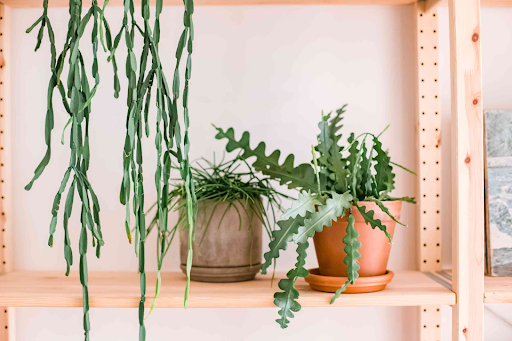When we think of cacti, we often picture the arid deserts of the American Southwest, with their spiky, sunbaked inhabitants. But did you know that there’s a whole world of cacti that thrives in the lush, tropical rainforests of Central and South America? These cacti belong to the genus Rhipsalis, and they’re a unique and fascinating group of plants.
What is Rhipsalis?
Rhipsalis is a genus of cacti that includes over 35 different species. Unlike their desert-dwelling cousins, Rhipsalis cacti are epiphytic, which means they grow on other plants, like trees, rather than in the ground. This adaptation allows them to thrive in the canopy of the rainforest, where they can access filtered sunlight and ample moisture.
Appearance
One of the most distinctive features of Rhipsalis cacti is their appearance. They have long, trailing stems that can drape gracefully from their host plants, creating a lush, green curtain of vegetation. These stems are made up of segmented, cylindrical sections that give the plants a unique, almost ethereal appearance.
Caring for Rhipsalis
If you’re intrigued by Rhipsalis and want to bring one into your home, you’ll be pleased to know that they’re relatively easy to care for. Here are some simple guidelines to help you keep your Rhipsalis healthy and happy:
1. Light: Rhipsalis prefers bright, indirect light. It’s essential to shield them from intense, direct sunlight, which can scorch their delicate stems. A north or east-facing window is ideal.
2. Water: These rainforest cacti enjoy consistently moist but not waterlogged soil. Water them when the top inch of soil feels dry, typically every 1-2 weeks, depending on your home’s humidity levels. During the growing season (spring and summer), they may need more frequent watering.
3. Humidity: Rhipsalis and Anthuriums thrive in high humidity, which mimics their natural rainforest environment. You can increase humidity by misting the plant, placing a tray of water near it, or using a humidifier.
4. Temperature: Keep your Rhipsalis in a warm environment, ideally between 70-80°F (21-27°C). They can tolerate slightly cooler temperatures in the winter but should be protected from frost.
5. Potting: Use a well-draining potting mix, such as one formulated for cacti or succulents. Report your Rhipsalis every 2-3 years to refresh the soil and provide room for growth.
6. Fertilizing: Feed your Rhipsalis with a diluted, balanced liquid fertiliser during the growing season (spring and summer) every 4-6 weeks.
Common Varieties
Rhipsalis comes in various species, each with its unique charm. Here are a few popular ones you might encounter:
1. Rhipsalis baccifera: Also known as the mistletoe cactus, this variety has slender, cascading stems with tiny white flowers and small, berry-like fruits.
2. Rhipsalis cereuscula: This species features delicate, thread-like stems and is often called the coral cactus due to its appearance. It produces small white or yellow flowers.
3. Rhipsalis campos-portoana: Recognized by its flat, segmented stems, this variety has a more flattened appearance compared to some other Rhipsalis species.
4. Rhipsalis paradoxa: With zigzagging stems and unique growth patterns, this variety is sure to capture attention. It produces small, white or pinkish flowers.
Benefits of Rhipsalis
Beyond their aesthetic appeal, Rhipsalis cacti offer several benefits:
1. Air Purification: Like all plants, Rhipsalis helps improve air quality by absorbing carbon dioxide and releasing oxygen. They can help freshen up your indoor spaces.
2. Stress Reduction: Caring for plants, including Rhipsalis, can have a calming effect and reduce stress. Their unique appearance can also be a source of relaxation.
3. Connection to Nature: Having a piece of the rainforest in your home allows you to connect with the natural world, even if you live in a bustling city.
In Conclusion
Rhipsalis cacti are a delightful addition to any indoor garden. Their unique appearance, easy care requirements, and tropical origins make them a popular choice among plant enthusiasts. Whether you’re a seasoned plant parent or a beginner looking for a low-maintenance houseplant, Rhipsalis has something to offer. So, why not bring a touch of the rainforest into your home with one of these charming cacti? With a little love and attention, your Rhipsalis will thrive and bring a piece of the lush jungle to your living space.
